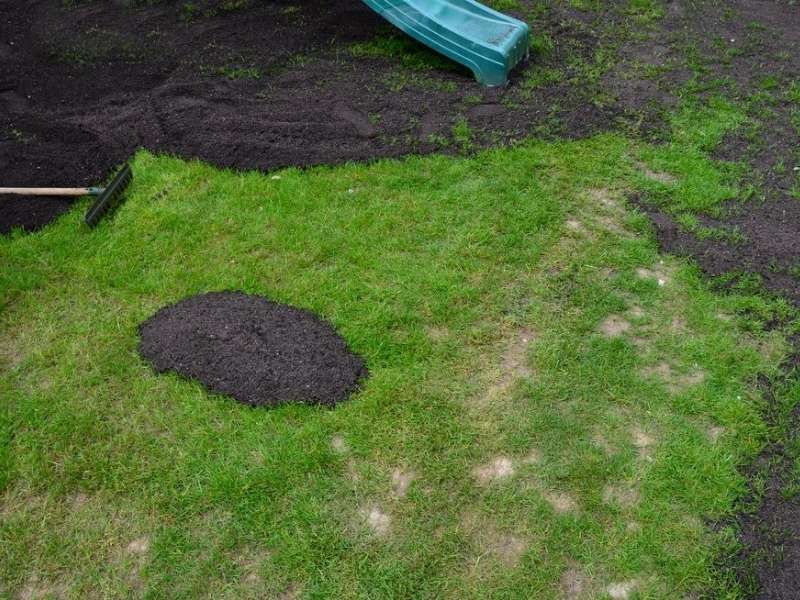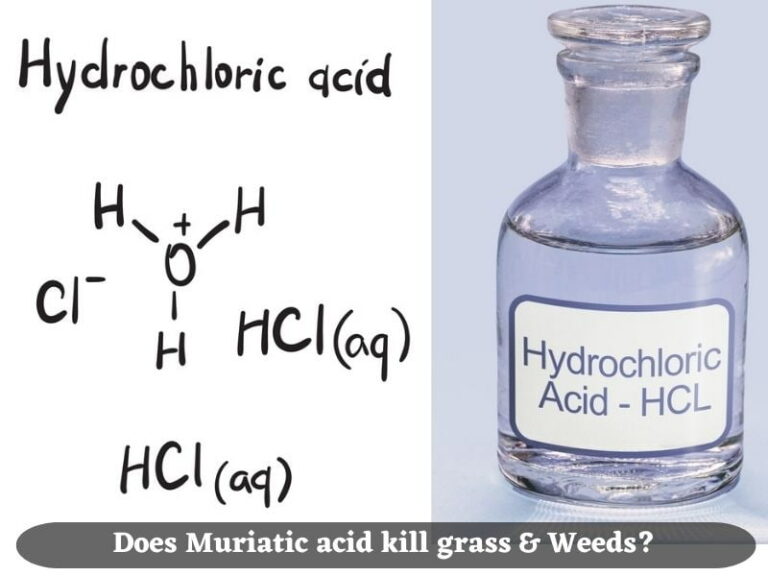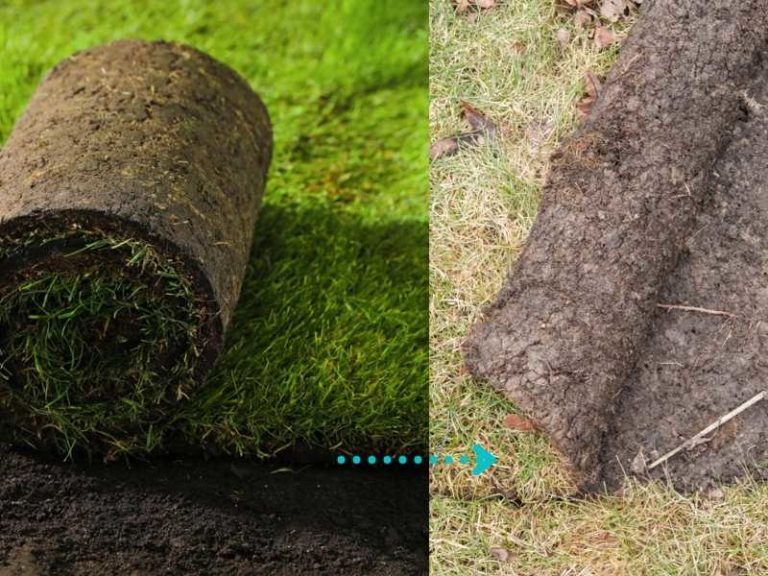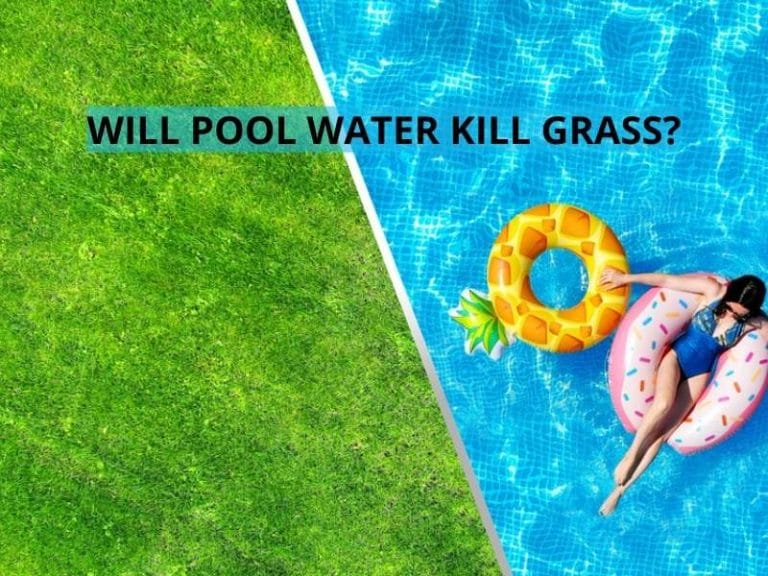Best Top Dressing for Lawns
By topdressing your lawn with about 1/4 an inch of compost, sand, or other material, you’ll be amending and improving the soil quality in your lawn. It can also smooth out bumps and encourage the grass to grow thick and lush. But what’s the best top dressing for lawns, and what should you consider when choosing the right material?
The best top dressing for lawns is compost because it is rich in nutrients and can help improve the soil structure in your lawn. Applying compost also reduces a lawn’s fertilizer and water needs since it improves water retention and may contain both micro and macro-nutrients required by grass.
Contents
What makes a good lawn top dressing?
A good top dressing material for lawns should have a mix of sand, peat, and loam soil. These components are the closest to the soil’s natural composition and can be easily incorporated into your soil. However, the nature of the soil in your yard may require a specific type of top dressing.

Sand, for example, is a great top-dressing material for a bumpy lawn. It smoothens and levels the ground while improving the soil’s drainage, which gives a big boost to the growth of grass.
On the other hand, peat (such as sphagnum or finely sieved sedge peat) acidifies the soil and prevents worm infestation. High-quality loam soil encourages grass growth when used as a top-dressing material for slow-growing grass.
Best Top Dressing for Lawns
As we’ve already established, a good top dressing for your lawn should have sand, topsoil that’s similar to your lawn’s existing soil, or high-quality compost. But should I overseed first before or after top dressing? A custom blend mix of sand, compost, and soil can also make a great top dressing to use. Each of these materials has different benefits and may be suitable for different needs.
Here are the 4 best top dressings for lawns:
1. Sand
Applying sand as a top dressing material is widespread, especially in places like golf courses. Sand has excellent benefits, especially if it has no lime, since lime can damage grass by altering the soil’s pH.
Sand should be applied as a light layer of 1/8″ – 3/8″ to improve the quality of the turf and reduce the severity of some turf infections such as anthracnose. Also, ensure the texture of the sand you use is as close in composition to the native soil on your lawn. Avoid using fine sand over coarse-textured soil.
Here are the benefits of using sand as topdressing for your lawn:
- Improved smoothness: Sand is best used to level bumpy ground. It leaves behind a smoothened surface, getting rid of any areas higher than others on your lawn.
- Sand dilutes thatch: Thatch is a layer found in the upper root zone. It can be concentrated, and mixing thatch with sand improves aeration and improves its overall quality.
- It improves the recovery of grass: Grass can occasionally experience thinning. Incorporating sand for top dressing helps in the cushioning of leaf tips and crowns. Topdressing your lawn with sand also helps in reducing the occurrence of algae in lawns.
- Increased Firmness – Turf is responsible for the production of organic matter, creating a soft and spongy turf. Topdressing with sand reduces the sponginess of the turf by improving the firmness of the soil structure. It also improves aeration.
- Sand improves lawn drainage: In comparison to other soils, sand drains well and resists the compaction of the soil. When you use sand regularly over a long period, the general aeration and drainage of the soil improves, which means there will be a reduced need for core aeration.
Disadvantages of using sand for top dressing
There are a few disadvantages of using sand as a top dressing. These include:
- Fine sand can seal the surface and prevent infiltration. Sealing the surface means that water will not seep through the surface. Water is necessary for the proper growth of grass; therefore, good drainage is mandatory.
- Sand does not retain nutrients. Applying sand too frequently lowers soil fertility and can lead to an overreliance on fertilizers to keep the grass healthy.
- Very coarse sand does not always blend well into surface grass. Poorly incorporated coarse sand will lead to an uneven lawn.
- Uneven and heavy applications of sand can choke grass and impair its growth.
- Sand is not suitable for top-dressing clay soils. When these two come together, they create a cement-like mixture.
Suitability of sand as a topdressing material
Overall, sand is a great top dressing when you want to improve the drainage of your lawn. Adding a thin layer of sand to your turf periodically means that water drains freely to the roots, promoting the healthy growth of grass.
Sand is also suitable because of its good integration into your lawn. It is not easily visible and will promote a clean, smooth finish to your lawn’s appearance but also help supports grass varieties that grow in sandy soils.
2. Compost

Compost is organic material that is added to soil to make it healthier and more productive. It is by far the best for use as a top dressing because it moves down through grass better than most other types of top dressing.
You do not have to buy ready-made compost as it can be made at home using food scraps and waste gathered from your yard such as leaves from trees. Excellent compost can be made from organic matter such as grass clippings, eggshells, fruits and vegetables that have gone bad, and the green matter that is moist. All these are rich in nitrogen, which is great for making your grass turn greener.
Benefits of using compost for top dressing
- Compost is fine and can be easily spread over a lawn. No big chunks are left behind on your lawn after incorporation. It is also light and easy to distribute over grass.
- Unlike sand, compost contains the optimum balance of macro and micro-nutrients. These nutrients are released gradually into your soil to nourish your lawn and make the grass grow thicker faster.
- Compost has a neutral pH that is best for the growth of grass.
- Compost is packed with microbes that are beneficial to your grass. Microorganisms digest and break down organic matter found in the compost and release nutrients into the soil. They also break down thatch when they feed on grass clippings. They return these clippings to your soil as nitrogen (which fuels growth).
- Compost is inexpensive compared to sand and blended topdressing mixes. You can even produce compost in your backyard from kitchen waste.
Disadvantages of using compost for top dressing
Compost manure can lack nutrients or get easily contaminated. You would have to do a test to ascertain that compost has all the required nutrients.
Overall, compost is a great top dressing for lawns that require a boost in nutrients. It is mostly organic and can improve the texture and quality of the soil on your lawn. There are no long-term effects of adding compost to your lawn on a regular basis. It is, however, important to ensure the compost you add to your lawn is free of pests and contaminants of any kind.
3. Topsoil
Topsoil is the uppermost 5-10 inches of soil. It is rich in organic matter and microorganisms that are beneficial to plants. To use topsoil, ensure that it is similar to the existing soil structure. Topsoil is not heavy and spreads easily over grass.
Benefits of using topsoil as top dressing
- Topsoil repairs lawn damage. You can use it for leveling your lawn and filling in bare spots that have been eroded due to irrigation and heavy rains.
- Topsoil improves drainage in the lawn since its structure allows water to seep through to the root zone of grass, thus promoting good growth.
- It is also great for improving and correcting soil pH, which is why it is the best top dressing for overseeding and planting new grass seed.
Disadvantages of topsoil as top dressing
- Topsoil can contain weed seeds that can easily infest and outgrow your grass. Weeds compete with turfgrass for nutrients and space.
- Topsoil sometimes contains lime, fertilizers, and other chemicals. Unless you test the soil, you cannot be sure of its components.
- Topsoil is generally less nutritious compared to compost.
Mixing topsoil with organic matter or compost is recommended to boost its nutrients. However, it is light in texture and has good drainage properties that are great for top dressing for your lawn.
4. Blended mix
The use of a blended mix of topsoil, high-quality compost, and sand would work best. You can purchase these mixes ready-made from stores, or you can choose to do the preparation and mixing yourself. You would incorporate all the advantages of individual top dressing materials and reduce disadvantages.
Compost, for example, would enrich the topsoil and sand. This blended mix is considered the better option compared to using individual components.
Here a video on the best way to topdress your lawn:
The best way to decide on the materials to use for top dressing can be determined depending on the cost of the top dressing lawn materials. Compare your budget versus the materials available in your area/ state.
Is top dressing the same as topsoil?
Top dressing is different from topsoil. Topsoil refers to the topmost layer of soil (usually 5-10 inches). At the same time, top dressing is the organic material, sand, topsoil itself, or even a blend of these materials that are spread over grass or gardens. Top dressing helps level the ground as well as enrich it with nutrients.
Topsoil does not necessarily contain any nutrients unless they have been incorporated by the use of fertilizers. It can be used individually or added to compost and sand to get the best top-dressing product. The final outcome becomes perfect for use as a top lawn dressing.
References
- William B. Davis, Environmental Horticulturist, University of California: Pros and Cons of Frequent Sand Top Dressing
- Jackie Jordan, Commercial Horticulture Agent, et al; Clemson University Extension: Topdressing a Home Lawn
- S.C. Department of Health and Environmental Control: Composting – Simple Steps for Starting at Home




